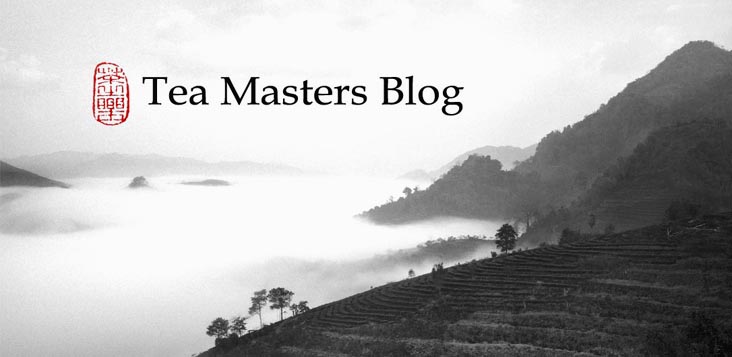 |
| Shan Lin Shi |
Knowing what a top Oolong tastes like, we can try to select one with similar characteristics at much more lower price. It won't be the same, because each mountain has its own taste and fragrances, but we can try to get as close as possible.
From left to right: Alishan 1500 meters, Shan Lin Shi 1400 meters and Shan Lin Shi 1200 meters. This time, I'm using a green Cha Bu as a symbol for the spring harvest and the feeling of this elevation level: there are much more green bamboo in the scenery.
Left:
Origin: Alishan, Changshu Hu
Elevation: 1500 meters
Hand harvested on April 10th, 2013
The dry leaves have some yellow color that is different from the greener Shan Lin Shi.
As to the brew, it's also slightly more yellow than the Shan Lin Shi.
Middle:
Origin: Shan Lin Shi, Fan Zai Tian
Elevation: 1400 meters
Hand harvested on May 5th, 2013
The name of this plantation indicates that it is located on aboriginal land.
Right:
Origin: Shan Lin Shi, Yang Keng
Elevation: 1200 meters
Hand harvested on April 8th, 2013.
This tea appears to have the lightest brew of the three.
The oxidation level is very similar to the Da Yu Ling/Lishan/Qilai we tasted previously. In terms of character, the Alishan Oolong displays the most strength and qi. This makes it more similar to Da Yu Ling. The 2 Shan Lin Shi Oolongs are much more soft, light and soothing. This kind of finesse is very much like a Lishan Oolong. The aftertastes are all long and sweet. There was no trace of bitterness in any of them. Great quality!
In terms of fragrances, the Alishan is quite floral, the Fan Zai Tian is more fruity and the Yang Keng smells almost like a Japanese Sencha!
There's much more to discover and appreciate by making a more skilled preparation for each of these great teas. Outdoors, it's more about enjoying the general character of tea. And, here, side by side, it's also an interesting way to compare teas quickly.
As a last note, I want to emphasize to all these unroasted and lightly oxidized Mountain Oolongs give a nice fresh and energetic feeling. This is exactly what I long for in June. They all manage to be more than just fragrant, as they didn't cause any bad feeling in my stomach. (This can often be the case for light oxidized oolongs that are not properly made). This is a basic requirement for a tea: it has to make your body feel comfortable. Only then can the mind hope to find happiness!
Enjoy the green mountain Oolongs!
















3 comments:
Fantastic approach. Different altitudes all side by side. Would like to see the subsequent brews and how they play out!
Hi Stephane, Interesting post. Just curious - What elevation were you at when your prepared the tea?
Domenic,
When you test leaves competition style you make 6 minutes long brews. You try to get most of the content of the leaves in 1 brew to judge it. Nevertheless, with these top quality high mountain oolongs, I did make 2 brews in this article (with similar results).
Linda,
The elevation isn't very high. I would say around 500 meters.
Post a Comment